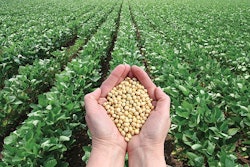
Batching control systems, or the automation software that executes all feed mill manufacturing processes, play a critical role in ensuring traceability in animal feed production.
“Batching systems today log everything done in the mill — in either the automatic or manual mode of operation — so there is always documentation available for any given production time period,” says Alan J. Berndtson, WEM Automation’s director of sales for feed, food and agriculture.
Batching controls also provide “guidelines and procedures to ensure batches are created within tolerance, feed quality is consistent and all pertinent ingredient lot information is captured to ensure the integrity of the finished product,” says Don Goshert, vice president and general manager, Sterling Systems & Controls Inc.
Aside from the technology’s practical functions for feed manufacturers, the assurances of batching controls can translate to improved consumer trust in the feed supply.
Batching control systems "are the chain link in the process chain from field to fork,” says Michael Brühwiler, Buhler product manager, digitalization and automation. “Transparency in where [animal proteins] are coming from builds consumer confidence.”
CPM sales engineer Steve Buehne feels the feed industry utilizes batching automation better than the human food industry.
“The entire feed mill is usually controlled by one software package and allows traceability front to back … the food industry has several islands of control and all the lot tracking data may not be available throughout the process,” he says.
Here, we will examine how batching control technology delivers feed safety and traceability.
Regulations and feed safety
Aside from fueling production processes within the mill, batching control systems contribute to critical secondary functions, such as data capture and record keeping. The ability for manufacturers to track lots and ingredients throughout the entire process helps ensure feed quality and safety, but also regulatory compliance.
According to Berndtson, in the United States, the requirements of the Food Safety Modernization Act (FSMA) have resulted in “an increased interest and implementation of hand-add prompting with check-weigh and barcode scanning.”
“This is typically the central starting point behind the batching system and often leads to the higher-level track and trace systems that will track the ingredient lots into the warehouse, through the production process and to customer,” he says. “The ability to easily track an ingredient lot forward or backward [can be] an integral component of a mill’s feed safety plan.”
In the instance of a recall, for example, Buehne notes that the detailed material tracking process makes it easy to identify and remove vulnerable materials.
“If a vendor reports a bad ingredient lot, the control system can report all shipments and bins exposed to the contaminated material,” Buehne says. “If a customer reports a bad feed shipment, the control system can trace it back to the ingredient lots used to make it and identify which ingredients may be suspect.”
Traceability and feed safety
Feed mill batching control systems have long been used to track feed and raw ingredient lots; however, the role for the control system is expanding. Here are several ways batching software ensures feed safety and traceability:
- Micro-ingredient assurances
Beyond inventory tracking, batching software is utilized to control and monitor automatic micro-ingredient weighing systems to ensure dosing accuracy, tolerance and the intended use of the ingredients.
“Batching automation, along with micro-scaling, removes human error by using fewer hand adds,” Buehne says.
Scale monitoring can also identify if an ingredient enters the scale accidentally, e.g. mechanical equipment malfunction or operator error.
- Comingled grain traceability
From intake until the finished feed is distributed, batching controls trace raw materials through the entire production chain. Berndtson notes that batching systems are especially helpful when tracking the use of comingled lots.
“Commodities do not flow out of a bin on a first-in, first-out basis,” he says. “When multiple lots are commingled in a bulk bin, the batching system needs to be able to track all of the individual lots that could possibly have been used. When a bulk bin goes empty, all of the lots are cleared from the bin and the process starts over.”
In the instance of a recall, this information ensures the mills can identify all lots touched by the contaminated ingredient.
- Critical control points
Batching systems monitor the integrity of critical control points.
“New algorithms support increased productivity and improve plant uptime by validating the bacteria kill step,” says Brühwiler, noting the system ensures the feed is produced at optimal temperatures.
- Deep-dive lot identity
The scope of ingredient and lot identity has expanded to include tight, accurate inventory and lot control for all bagged ingredients.
Berndtson offers this example: “A feed mill may receive 120 bags of an ingredient from the same lot code. With proper bar code labeling and the utilization of standard hardware through the manufacturing process, such as tablets and bar code scanners, every bag can have its own unique identity. A quick scan of any bag in the mill will contain not only the ingredient and lot code, but also where the bag should be located and its production run allocation.”
“Lot tracking, material traceability and batch validation is made easier than ever with today’s batching system automation,” Goshert adds. “It can be as simple or as detailed as you want it to be. Using either RFID or barcode technology, in conjunction with modern custom automation software, can make data entry more efficient than ever.”
- Contamination prevention
Contamination monitoring prevents accidental exposure to unintended products if, for example, the line has failed to be cleaned.
“Sequencing systems regulate flushes, and the paths taken through machinery, to prevent, for example, antibiotic-free feed from being contaminated with antibiotics,” Buehne says.
- Simple interface
Interface improvements have made batching control systems easier and more intuitive to operate.
“The ‘checks and balances’ designed in the software help the operator maintain visibility into the process to catch and correct an issue before it becomes a big problem,” says Goshert. “Equipment monitoring reduces failure and the risk of catastrophic damage.”
The future of batching software technology
In the future, Berndtson believes applications on mobile devices, such as tablets and smart phones, will increasingly improve mobility and efficiency within the mill and free employees from the control room.
“Mills will continue to be designed with the goal of decreasing manual inputs,” Berndtson says. “This will lead to an expansion of unattended mill operations.”
In addition to increasing throughput and productivity, Goshert feels batching system interfaces will continue to become more natural and intuitive.
Buehne points to the integration of enhanced security functions, such as fingerprint and facial recognition technology.

















